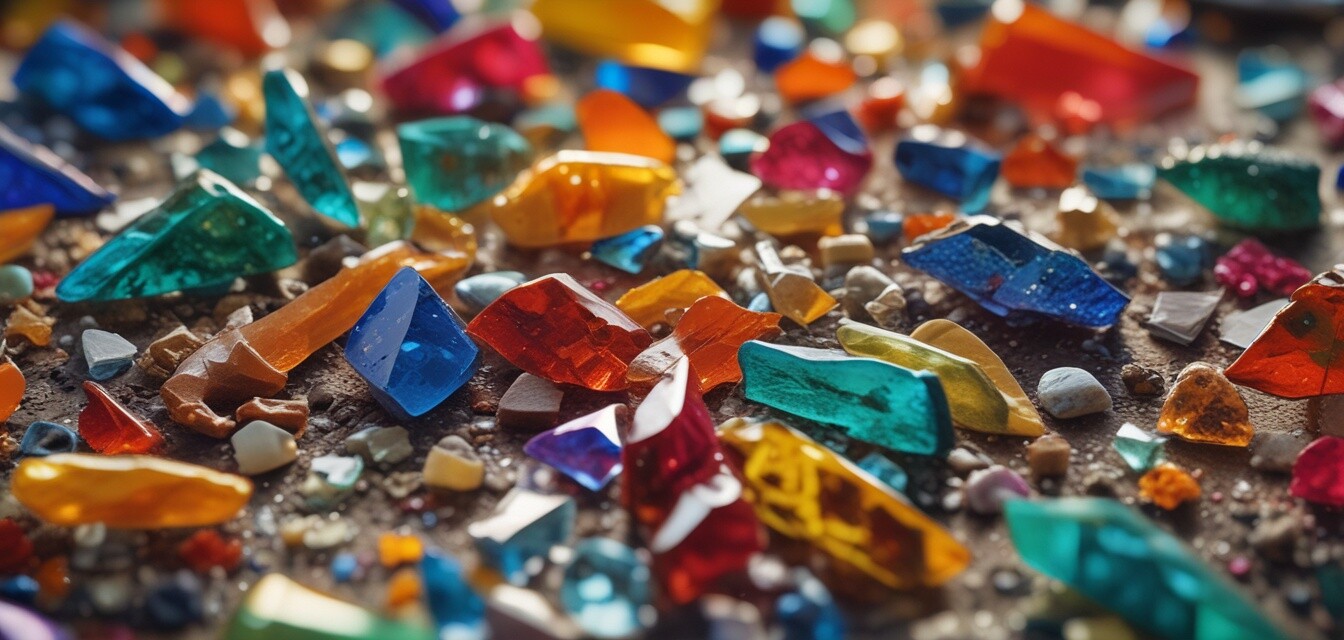
The Chemistry of Glass: Understanding the Materials
Key Takeaways
- Glass is primarily made of silica, with various additives influencing its properties.
- The chemistry of glass affects its melting point, color, and durability.
- Understanding glass composition enhances the creative process and outcome of glass art.
- Different types of glass require specific kilns and molds for effective crafting.
- Experimenting with materials can result in unique artistic effects.
The art of glass making is not just about creativity; it's also deeply rooted in chemistry. Understanding the materials that compose glass is essential for any artist looking to master this craft. In this article, we will explore the different types of materials used in glass making, how they influence the properties of glass, and the chemistry behind it all.
The Basic Composition of Glass
At its core, glass is a solid material that is formed by the rapid cooling of liquid silica. The primary component of most glass is silica (SiO₂), but it's the addition of various other materials that give glass its unique properties.
| Component | Function |
|---|---|
| Silica (SiO₂) | Forms the glass network; provides fundamental structure. |
| Soda (Na₂O) | Reduces melting point and viscosity of silica. |
| Lime (CaO) | Enhances durability and chemical stability of the glass. |
| Alumina (Al₂O₃) | Improves resistance to chemical corrosion. |
| Additives (e.g., metal oxides) | Influence color and special properties of glass. |
How Different Compositions Affect Glass Properties
The combination of these materials not only dictates the physical characteristics of glass but also its visual and functional properties. Let's take a closer look at how different compositions affect glass.
Melting Point
The melting point of glass is greatly affected by its chemical composition. For instance, adding soda can significantly lower the melting point, making it easier to mold and shape.
Color
The color of glass can be changed through the addition of different metal oxides. For example:
- Cobalt oxide produces blue glass.
- Iron oxide can create shades of green and brown.
- Gold chloride can lead to red hues.
Durability
Adding components like alumina can improve the strength and resistance of glass to chemical attack, making it suitable for functional glass items.
Glass Types and Their Applications
Understanding the different types of glass is essential for choosing the right materials for your project. Here’s a quick overview:
| Type of Glass | Characteristics | Common Uses |
|---|---|---|
| Soda-lime glass | Most common; affordable with moderate durability. | Windows, bottles, and everyday items. |
| Borosilicate glass | High resistance to thermal shock. | Laboratory glassware, kitchenware. |
| Lead glass | Brilliant clarity and weight; softer and easier to shape. | Crystal glassware, fine art pieces. |
| Fused quartz | High thermal and mechanical resistance; very pure. | High-temperature applications, optics. |
Choosing the Right Materials for Your Projects
When it comes to selecting the right materials for your glass-making projects, consider the following tips:
Tips for Beginners
- Start with soda-lime glass for beginners to practice basic techniques.
- Experiment with different additives to see how they affect color and texture.
- Research each type of glass to understand its properties and best applications.
- Keep a notebook to track your experiments with different glass compositions.
Advanced Techniques in Glass Making
For seasoned glass artists, understanding the chemistry of glass allows for more advanced techniques, such as:
- Incorporating metallic oxides for unique color variations.
- Using different melting and annealing temperatures for varied texture effects.
- Customizing hand-blown glass through manipulation of material composition.
Conclusion
Understanding the chemistry of glass is vital for any artist, whether you are just starting or have years of experience. The materials used not only influence the melting process but also the aesthetic and functional properties of the final product. By embracing the science behind glass making, artists can unlock new techniques and possibilities in their creativity. Explore more about glass-making materials or check out our glass kilns to find the right tools for your next masterpiece!

